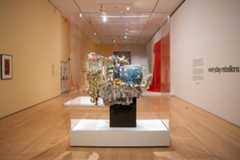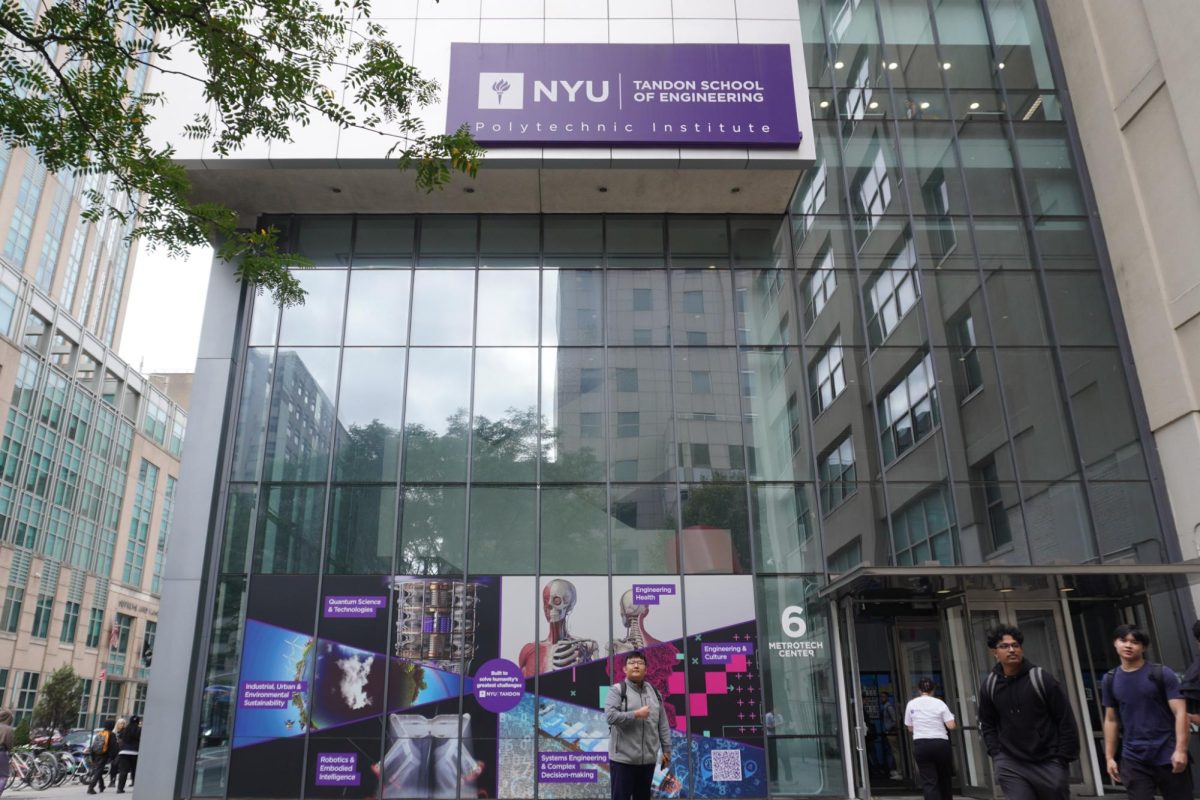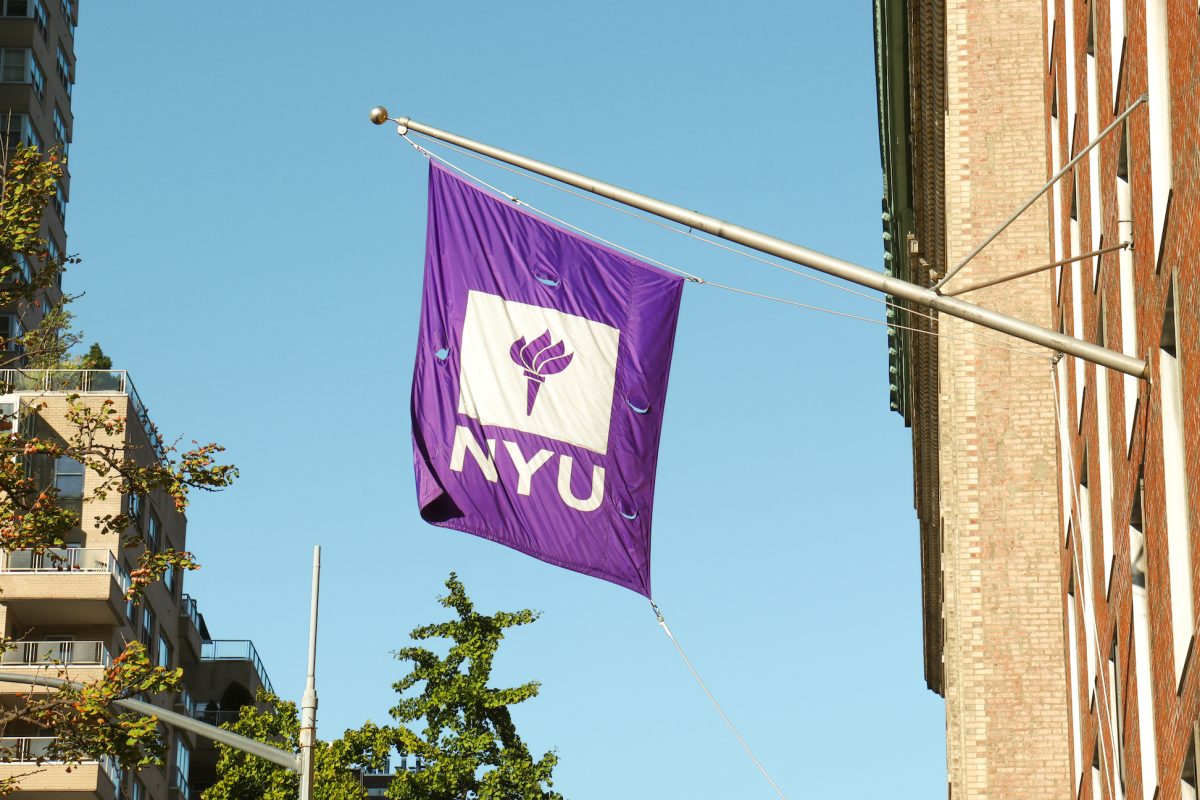Review: ‘Everyday Rebellions’ creates unlikely comparisons
Any art history student knows the experience of comparing two very different images on an exam. A professor will project two slides, and students are forced to make connections between artworks that they had never thought of before. The ethos of this exercise in analysis and creativity lays at the foundation of the Brooklyn Museum’s new exhibition “Everyday Rebellions: Collection Conversations.”
Inspired by feminist activist Gloria Steinem’s 1983 book “Outrageous Acts and Everyday Rebellions,” the exhibition showcases artworks that use “markers of everyday life” to make statements on worldwide issues. More interestingly, the show puts works from the Brooklyn Museum’s permanent collection into conversations with each other, making unexpected pairings and identifying thought-provoking throughlines.
In the “Domestic History Is Cultural History” section, which opens the exhibition, Alison Kuo’s 2024 sculpture “You Pick the Moon” is placed alongside a “Basin Shaped Jar” from the 18th-century Qing Dynasty in China. The two, despite being from vastly different periods and contexts, are deeply intertwined.


The 18th-century porcelain jar is painted with deep blue dragons spiraling across the vat — basins like these were used in the Chinese imperial court. Kuo’s sculpture incorporates a replica of a similar porcelain basin, but adorns it with beads, charms, strings and other small trinkets, many of which are decorations used during Chinese New Year. Placing these artworks together creates a culturally cohesive sense of continuity.
In “Processing Toward Progress,” three sculptures from the late 1800s by Auguste Rodin are contrasted against Nicole Eisenman’s 2019 sculpture “Three Walkers.” Rodin’s sculptures are larger-than-life bronze men in anguish, named after different burghers of Calais. The works celebrate the French city’s leaders, who sacrificed themselves for their people during the Hundred Years’ War.


Eisenman’s cement sculptures, described by the exhibition label as a “satirical critique of political rhetoric and power,” depict three men marching in tandem. Each one holds an object — a fly swatter, matches or a brown lump — and has a deformed, elongated face and a stick-figure body. The contrast between Eisenman’s comedic characters and Rodin’s stoic men shows the importance of context in figurative art, and creates an interesting meditation on the power we give people when we worship them.
A standout artwork from the “Heroes Are Human” section, which focuses on third-wave feminism, is Beverly Semmes’ “Chorus” installation, made in 1992. Eight red velvet gowns hang from the wall, extending from ceiling to floor. The bottom of the dresses are tangled and interwoven, and their sleeves are continuous, disabling the use of one’s hands. The installation is reminiscent of “The Handmaid’s Tale,” and as the wall text states, resists “the feminine constraints of decorum.”

I enjoyed the show, foremost, because of the pairings. It was interesting to see two works from vastly different periods within the same context. The quality of the art was also very high, which is, more than anything, a testament to the brevity of the museum’s curation.
I found the overall theme of the exhibition to be rather loose, though. The show’s opening wall claims that the works “invite conversations about how individual action can foster meaningful change,” though this idea was not always clear as I walked through the galleries. I struggled to place each work within the context of an everyday rebellion.
This being said, the exhibition’s focus on creating a conversation between artworks is of much importance. Sometimes we struggle to see repetitions of the past or throughlines between contemporary issues and those from long ago. Using art to explore these ongoing themes is impactful — the connections become so obvious right before the viewer’s eyes.
“Everyday Rebellions” is worth the trip to Prospect Heights. The show will be insightful for art history lovers and political thinkers alike, and it’s a chance to see works together in a never-been-done-before context.
Contact Alexa Donovan at[email protected].
























































































































































